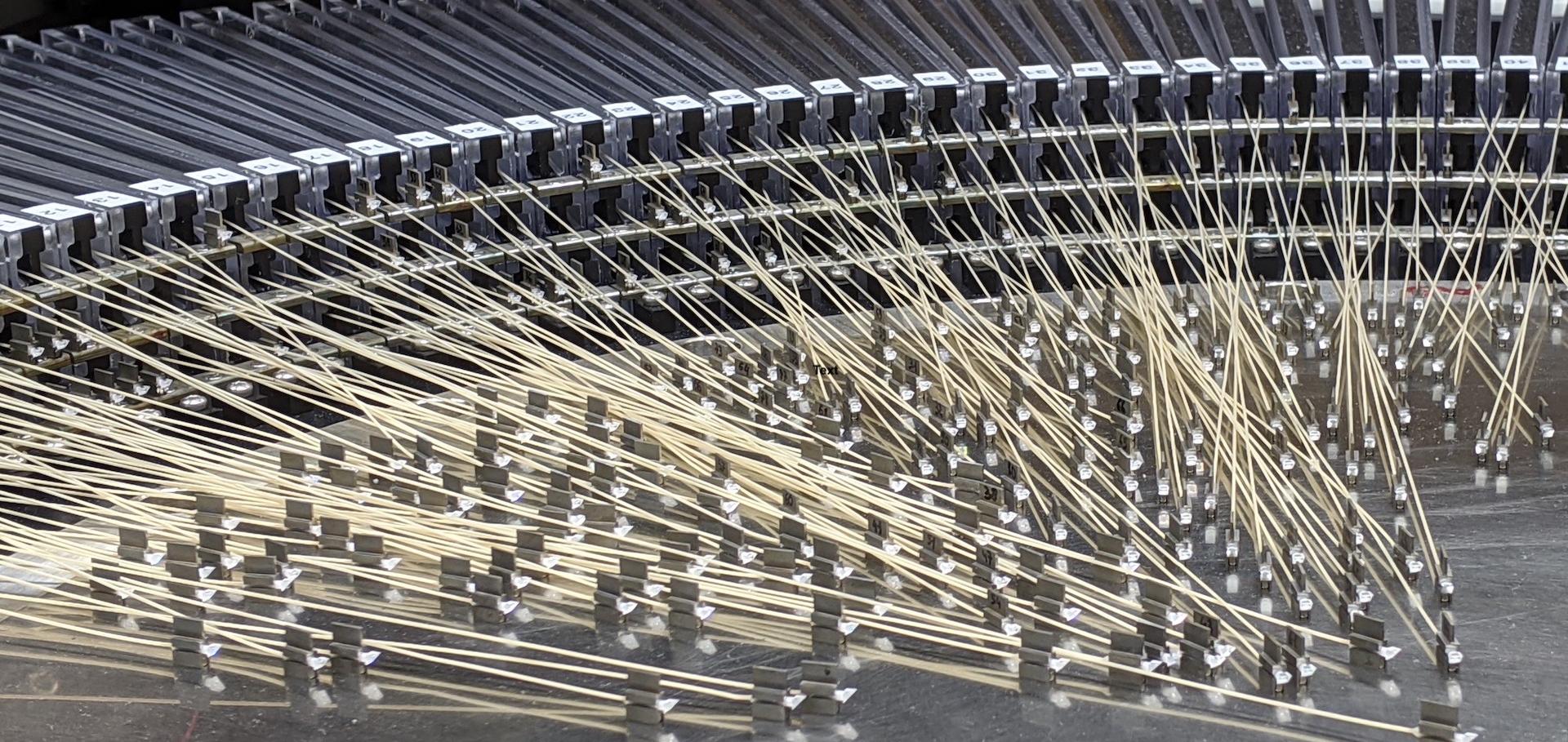Trade-offs in the visible spectrograph of the ELT instrument MOSAIC
Abstract:
MOSAIC is a concept for a multi-object spectrograph for the Extremely Large Telescope (ELT). It is planned to cover the wavelength range from 460 nm to 1800 nm with two types of spectrographs, optimized for the visible and the near-infrared. There are two observing modes; multiplex mode with 200 sampling points and Integral Field Unit (IFU) mode with 10 fields. The instrument consists of 5 visible spectrographs and 5 near-infrared spectrographs. The ELT is far from diffraction limited in the visible wavelength range. Rather than developing a large and complex AO system, it was decided that the instrument will be seeing limited in the visible. Spot sizes are therefore about 2.8 mm in diameter in the ELT focal plane, and need to be sampled by multiple fibers with large core diameter. As a result, large optics is required to achieve the science requirements on spectral resolution, bandwidth and multiplex. We work in close collaboration with manufacturers to design an instrument that is feasible and meets the scientific requirements.VPHGs for WEAVE: design, manufacturing and characterisation
Abstract:
WEAVE is the next-generation optical spectroscopy facility for the William Herschel Telescope (WHT). It shows two channels (blue and red) and two working modes, a low-resolution (R=3,000-7,500) and a high-resolution (R=13,000- 25,000). The dispersing elements of the spectrograph are Volume Phase Holographic Gratings (VPHGs), two for the lower resolution mode and three for the higher resolution mode. Such gratings have a large size (clear aperture > 190 mm) and they are characterized by some key features, i.e. diffraction efficiency, wavefront error and dispersion that affect the final performances of the spectrograph. The VPHGs have been produced by KOSI based on the WEAVE design. After that, the VPHGs have been characterized, showing interesting results in terms of diffraction efficiency that reached peak values of 90%. As for the wavefront distortion, which is one of the critical aspect in VPHG technology, a different behavior between medium and high resolution elements was found. A larger wavefront distortion have been measured in the high resolution elements, because of the higher aspect ratio. A polishing process on the assembled VPHGs has been performed in order to reduce the wavefront distortion. Here, the results are presented and the specific issues discussed.WEAVE spectrograph cameras: the polishing of the spherical lenses
Abstract:
WEAVE is the new wide field multi-object and integral field survey facility for the prime focus of the 4.2 m William Herschel Telescope. WEAVE fiber-fed spectrograph offers two resolutions, R ~ 5000 and 20,000. The dual-beam spectrograph has two cameras: the blue one optimized for the wavelength interval of 366 - 606 nm and the red one for 579 - 959 nm. Each camera is formed by eight lenses, one aspherical and seven spherical. The lenses of the red camera are identical to the lenses of the blue camera only differentiated by the anti-reflection coating wavelength range. The diameter of the largest surface is 320 mm while of the smallest is 195 mm. INAOE, as a member of the collaboration is responsible of the manufacturing of the 14 spherical lenses and the collimator mirror. Here, we describe the main characteristics of WEAVE high precision cameras lenses, the manufacturing challenges giving the combination of OHARA® glasses properties, dimensions and specifications. We discuss the solutions developed to achieve the very demanding specifications.Low-level control software for the WEAVE spectrograph
Abstract:
WEAVE is a wide-field spectroscopy facility for WHT which includes a multi-object dual-beam spectrograph which will operate in the visible wavelength range. The blue beam will cover the range 360-600 nm and the red arm will cover the 580-960 nm range. In these ranges the spectrograph will offer a mid-resolution (~5000), while in three narrower wavelength intervals, two for the blue arm and one for the red one, the instrument will provide a high (~20000) spectrograph resolution. The spectrograph is currently entering the assembly and integration phase and the first light is foreseen in 2019. The entire WEAVE project is managed by an international consortium led by the University of Oxford. The spectrograph is controlled by a coordination process, the so called High-Level Server, which is part of the Observatory Control System (OCS) software suite, and is the single point of access to the embedded control system, the so called Low-Level Control Software, which is based on PAC technology.
This paper describes the design of the embedded software for the control of the spectrograph mechanisms. We first describe the interface between high and low level software, then we present the PAC architecture and discuss the low-level state machine. Finally, we provide details on the principal program routines and describe the engineering interface.


